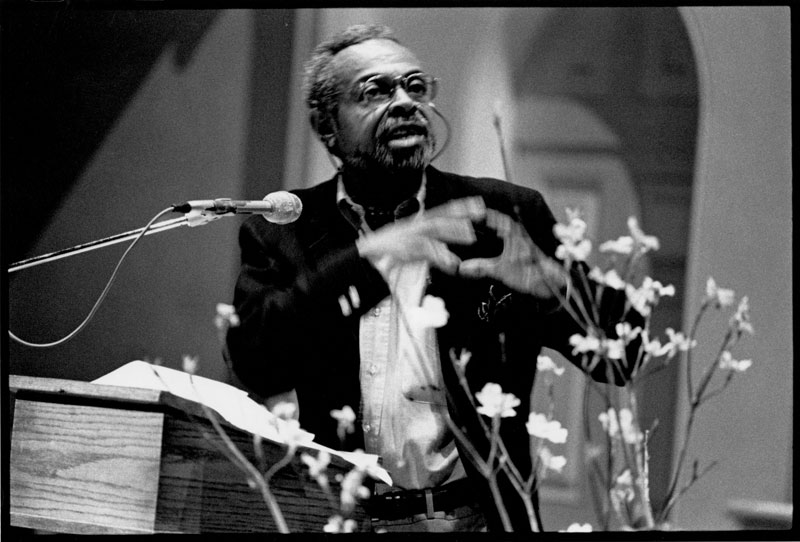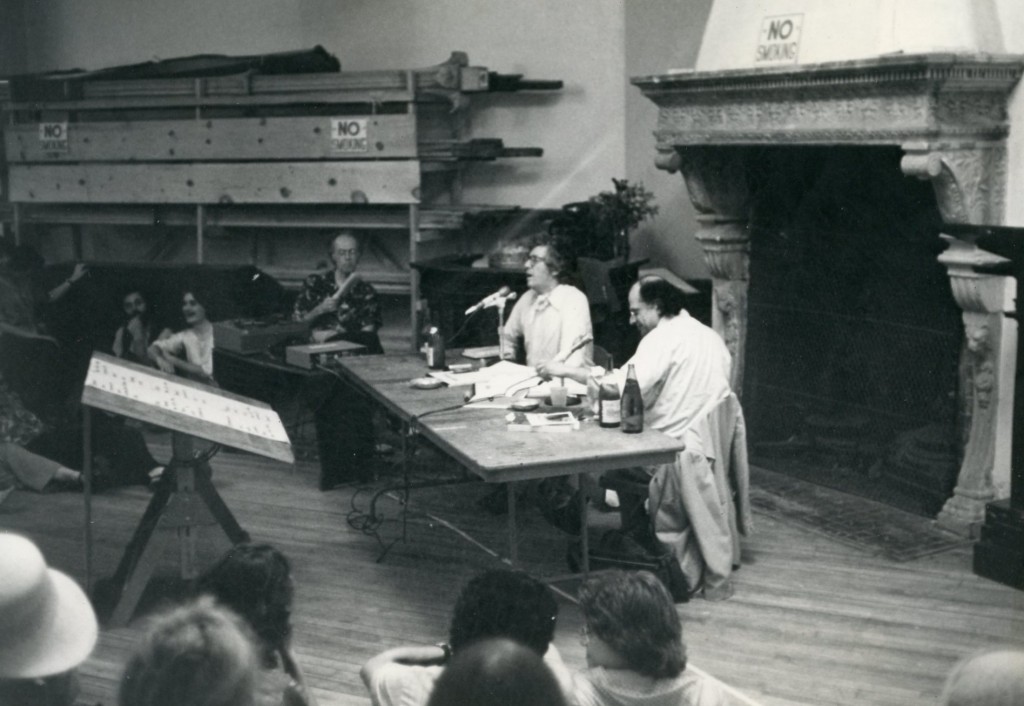Blog Archive
“On Tenement Roofs Illuminated”: The Poetry Project’s Inspiring History
October 20, 2015
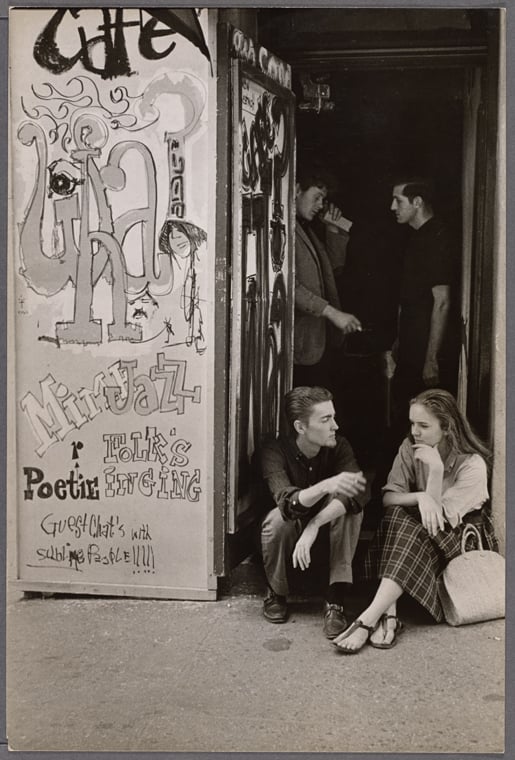
Bohemian wonderland: Walter Silver’s photographs of 1950s Beat Culture capture the spirit of the downtown freewheelin’ creative culture manifest in poetry readings and performances at Cafe Wha? and others. Readings of the so-called “beatnik” culture were one of the predecessors to the Poetry Project. Photo courtesy of the NYPL.
A long time ago, in a galaxy far, far away, Manhattan, specifically the Lower East Side, was a haven for creative types. Rent on the Lower East Side was relatively cheap (just consult your most convenient Patti Smith memoir to see how cheap). Painters, musicians, and writers lived and worked together. Sure it sounds like a fairy tale, but also it’s true.
For that real bohemian romance, go no further than St. Mark’s Church [1] and the Poetry Project. The Poetry Project began as a weekly reading at St. Mark’s and became so much more. So a church is not the first place you might think of, even in bohemian New York, for a poetry reading. Didn’t they meet in smoky coffee shops? Why yes. The group that became the Project has a long history. Some point to its start as a continuing series at the Tenth St. Coffeehouse between 3rd and 4th Ave and Les Deux Mégot on East 7th Street. (Both locations were co-owned by Mickey Ruskin, who would later open that famous high-low hotspot Max’s Kansas City.)
Allen Ginsberg would claim that the origins of the reading series predates the New York scene and is the heir apparent to readings at the Gaslight Café, which were themselves inspired by Berkeley readings in the 1940s. Ginsberg feels, and who can fault him that even the Berkeley readings have their origins in the literature and poetry scene? of Existentialist Paris. Even with such a proud history, by the mid-sixties the readings were on shaky ground. At that time, many were taking place at Café Le Metro, which was owned by Moe Margules, who reportedly was a Goldwater Republican. Something of a clash occurred between Margules and the members of the reading series who were from the Umbra collective of African-American writers on the Lower East Side. To say that there was the potential for political conflict was to put it mildly. To further push the situation to a head, Margules increased the minimum tab for attendees to 25 cents at a time when the price for a cup of coffee was approximately 10 cents (sigh). By around 1965, the poetry readings were near stranded. Enter the Reverend Michael Allen.
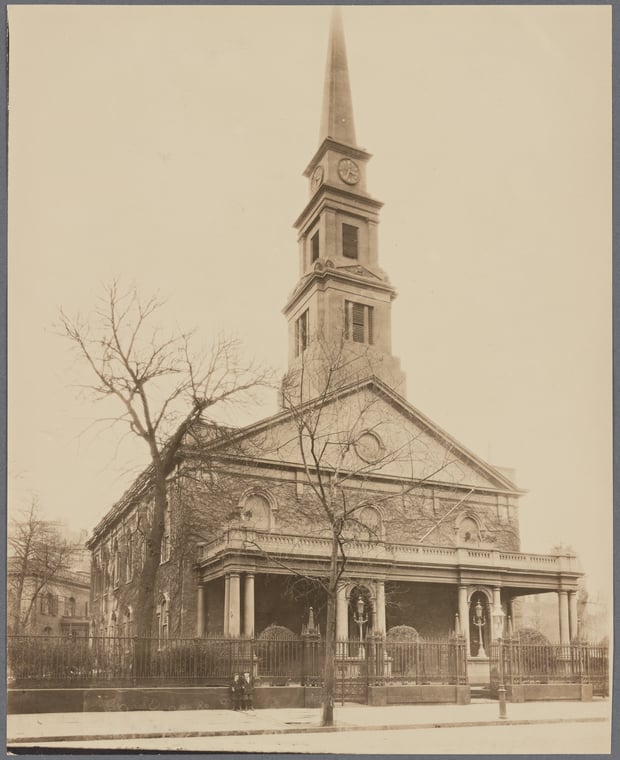
The power and the glory and some poetic spirit: an early image of St. Mark’s Church. Photograph courtesy of the New York Public Library.
Already a figure in the community, Reverend Allen of St. Mark’s Church had a bit of a legacy. St. Mark’s Church’s ‘unorthodox’ history began with Dr. William Norman Guthrie. Guthrie believed in a wider interpretation of religion than some and invited a variety of figures to deliver the sermons at his church. Poets such as Edna St. Vincent Millay and Kahlil Gibran “preached” at St. Mark’s. Guthrie also believed in what he called “Eurythmic Ritual,” or the presentation of dance as a spiritual offering. Modern dance denizens Martha Graham and Ruth St. Denis both brought movement to St. Mark’s Church. You can imagine that women dancing in classically-draped costumes caused a bit of a stir in 1922.
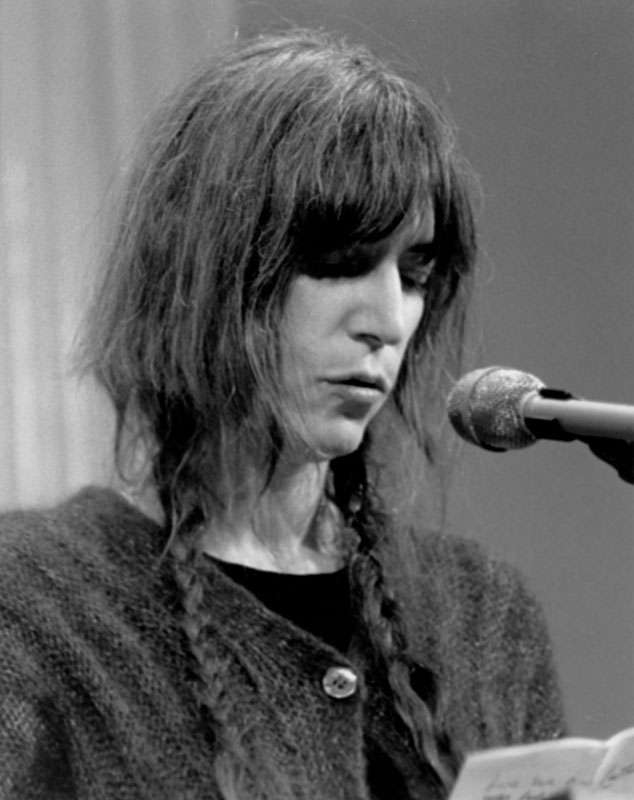
Patti Smith, also causing a stir, at a Poetry Project reading in 1995. Photograph courtesy of Melissa Zexter via the Poetry Project.
By the time Reverend Allen was shepherding the St. Mark’s flock; the church walls had already seen their share of action. Even among the more devout parishioners were poets. W.H. Auden lived down the street and apparently had a favorite pew.
After a series of fortunate coincidences, Allen officially welcomed the poets in 1966. Greats such as John Ashbery, fresh from a sojourn to Paris, read at the new location. Lawrence Ferlingetti’s first Wednesday night reading gathered a crowd of 1,200, and 500 people were turned away at the door. Fortune continued to favor the reading series, and Poetry Project became official with the help of funding from the New School and a two year grant from the Department of Health, Education and Welfare. So how is the welfare of the Project today?
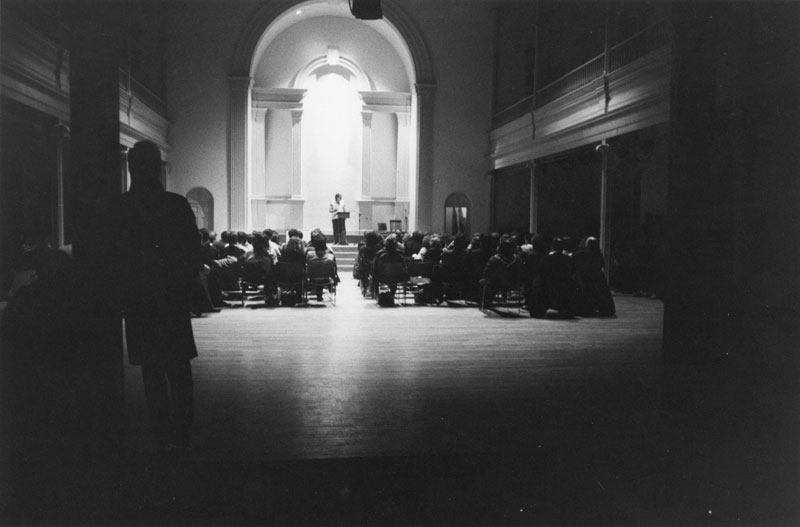
A reading in the Poetry Project’s beautiful St. Mark’s Church space. Photograph courtesy of the Poetry Project.
Stop by and see them sometime!
–Published by Julia Berick, Marketing and Communications Coordinator.
Much of the research for this blog was done with the help of the history available through the Project Project‘s online resources but any errors are entirely my own.
[1] “Wait, wait” you say. “St. Mark’s Church, that beautiful old building across from the 2nd Avenue Urban Outfitters? Isn’t that pretty firmly in the East Village?” Today, St. Mark’s Church is in the East Village, but we’re talking about a time before the area needed a justification for rising rents and definitely before the Urban Outfitters. In the Olde Days, everything below 14th Street on the east side was the Lower East Side.
